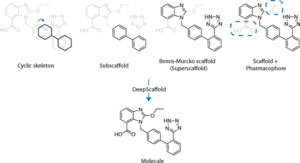JCIM | Modified Electrostatic Complementary Score Function and Its Application Boundary Exploration in Drug Design
roperties with accuracy comparable to high-level quantum chemistry methods. One such example is the calculation of electrostatic potential (ESP). Different ESP prediction ML models were proposed to generate surface molecular charge distribution. Electrostatic complementarity (EC) can apply ESP data to quantify the complementarity between a ligand and its binding pocket, leading to the potential to increase the efficiency of drug design. However, there is not much research discussing EC score functions and their applicability domain. We propose a new EC score function modified from the one originally developed by Bauer and Mackey, and confirm its effectiveness against the available Pearson's R correlation coefficient. Additionally, the applicability domain of the EC score and two indices used to define the EC score application scope will be discussed.
